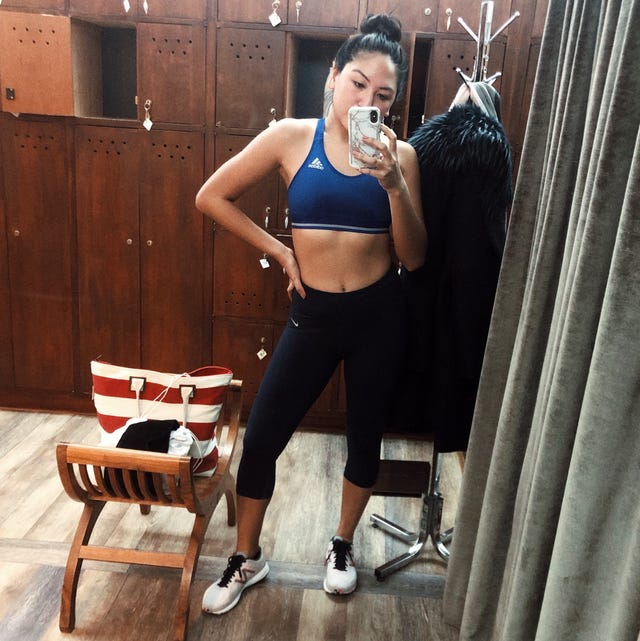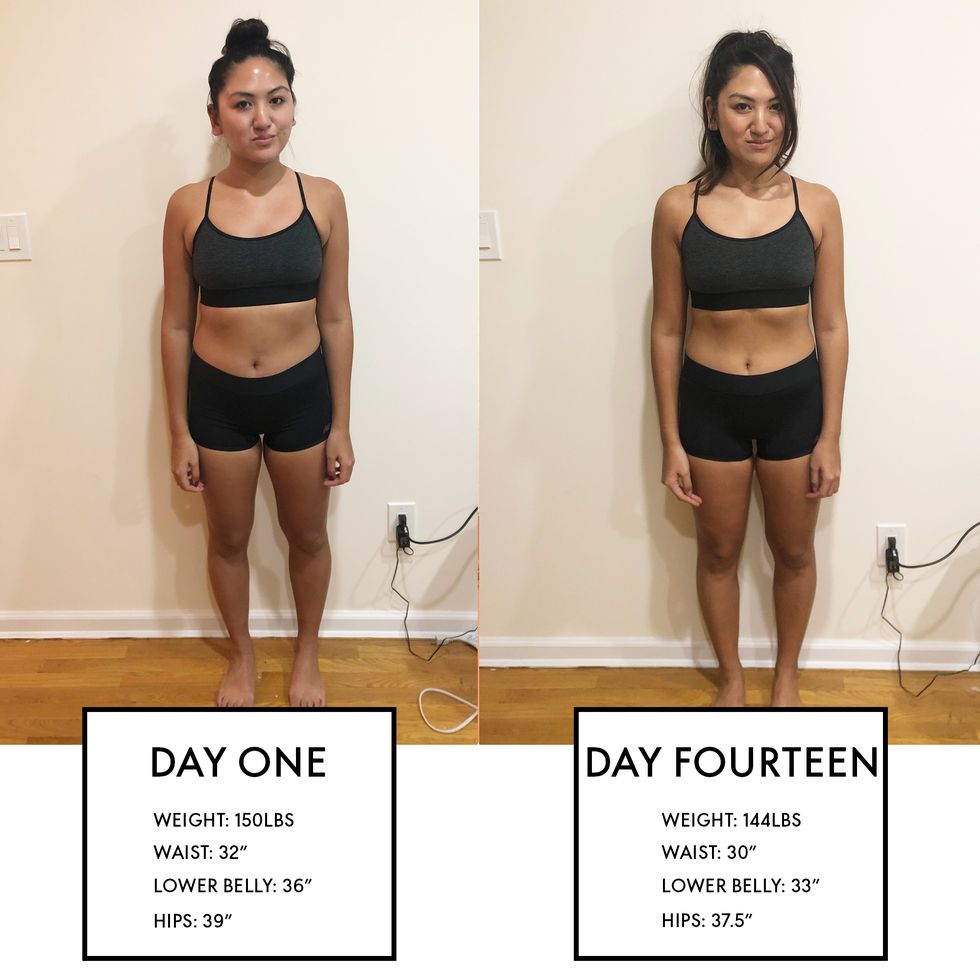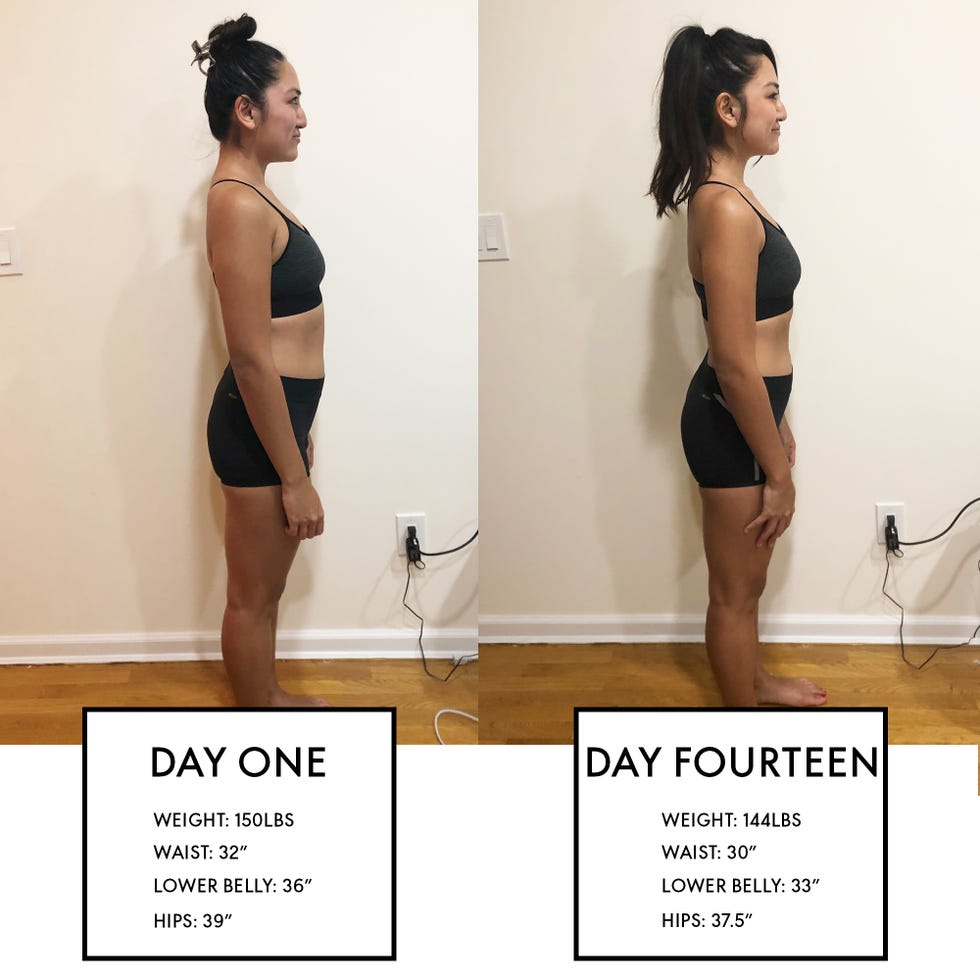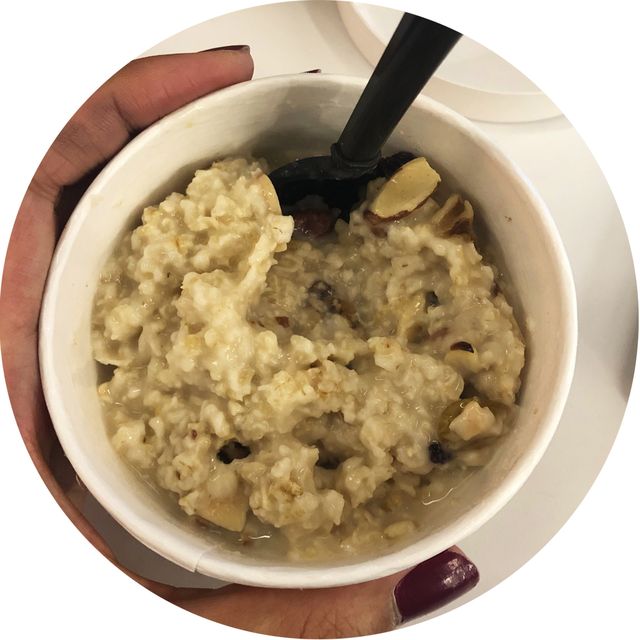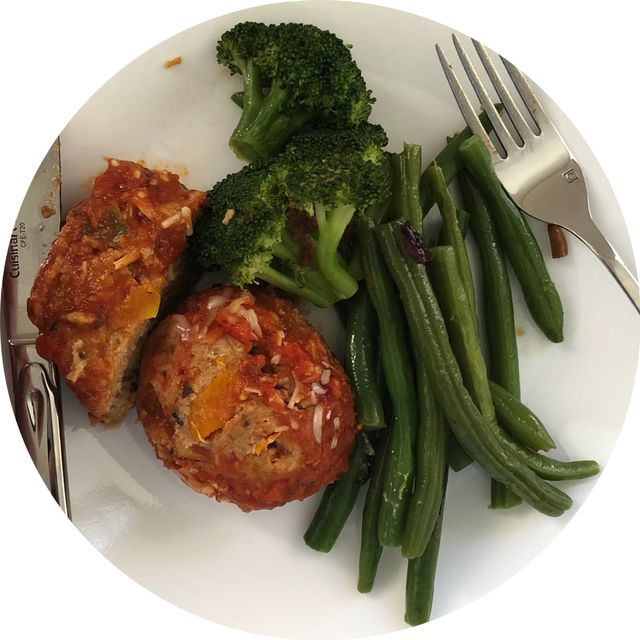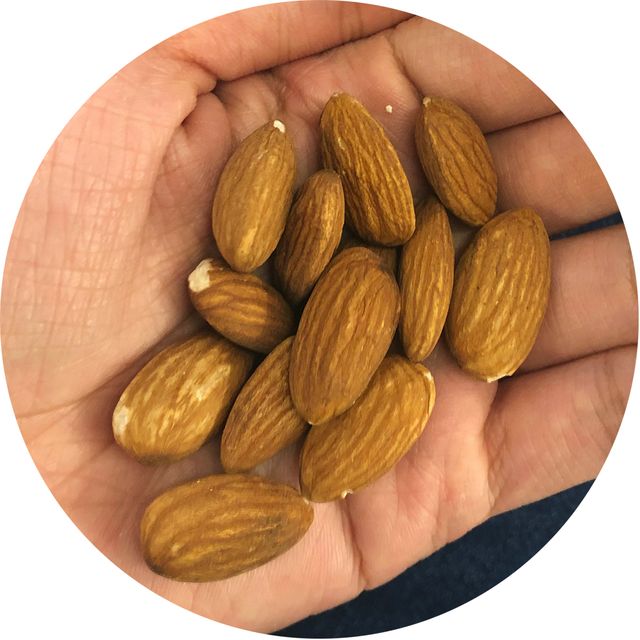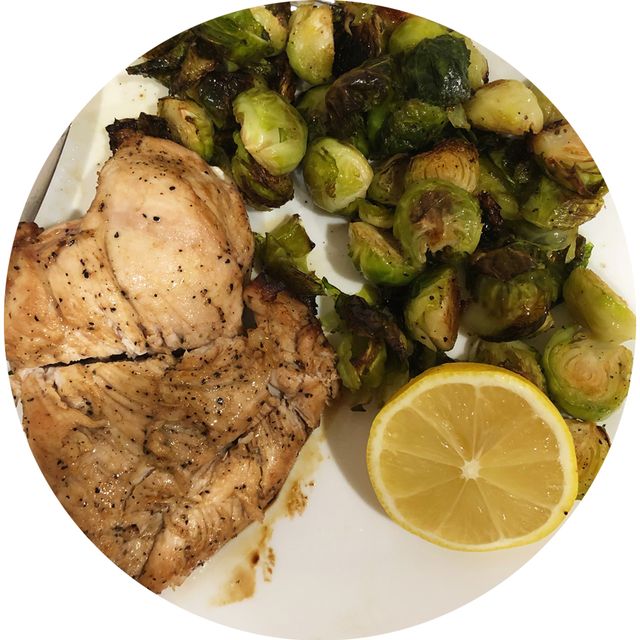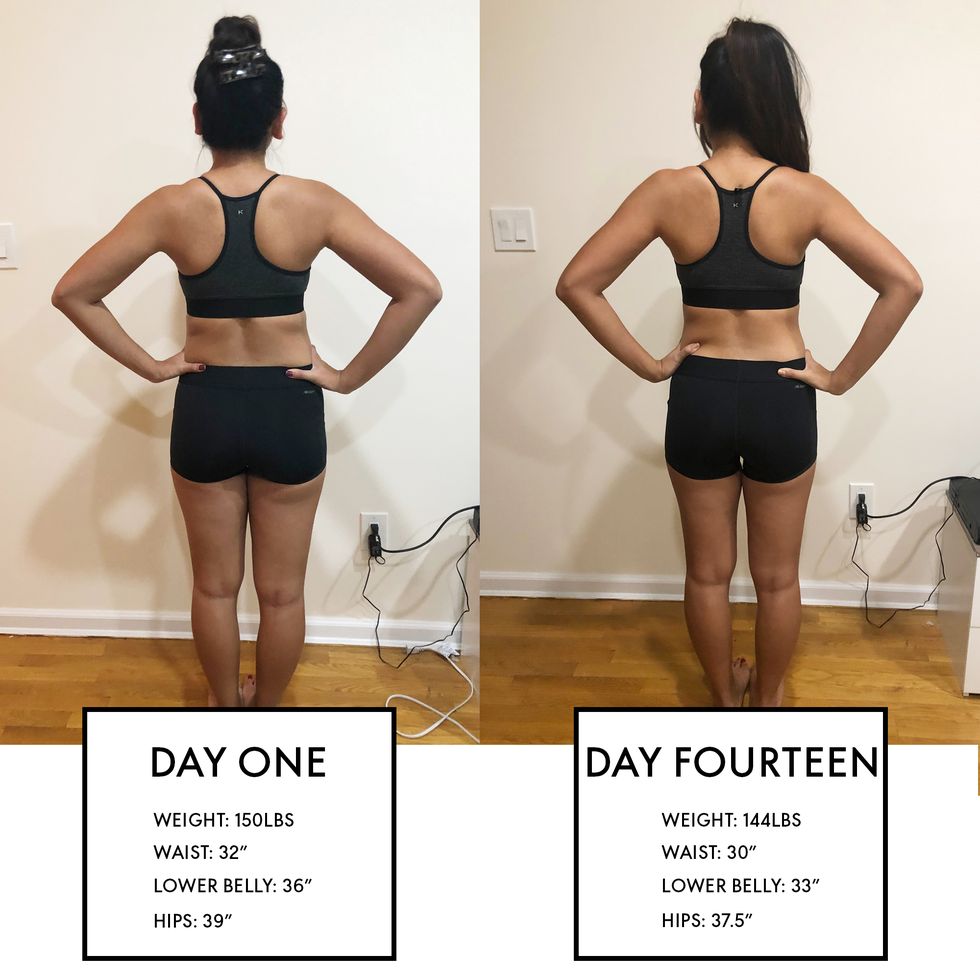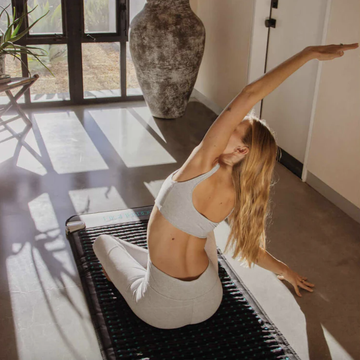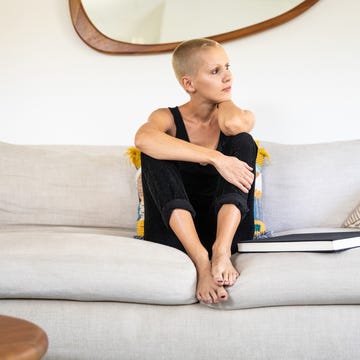Confession: Gyms intimidate me. Trainers intimidate me. Weight machines intimidate me. Or at least they did. I was the girl in the last row of the spin class or hidden in the corner of bootcamp, desperate to be invisible. Working out was a necessity—for my health, both physically and mentally—but the daunting task of just doing it and wading through my insecurities left me stuck in a never ending cycle of a stop-start fitness routine.
Things changed a little when I challenged myself to run the New York City Marathon last November. For four months, I ran at least three times a week (towards the end that meant up to 18 miles at once!). As expected, I crossed the finish line with a "“You are THAT bitch!” mentaility, but my back and knees were a wreck from overcompensating because I pushed my body without having built muscle support.
Then, I didn’t workout for a whole month.
As a jumpstart to my eternal (yet never fulfilled) New Year’s resolution to “exercise more,” I wanted to prove to myself that I could make working out a lifestyle, not a special occasion. I wanted to get stronger. I won’t lie and say I didn’t want to also see myself look more toned in form-fitting clothing (of course I did), but more than anything I decided I wanted to feel more in control of my body. I wanted to learn more discipline. I wanted to reset myself from my sugar obsession. I wanted to get fit—quick. So, I dove right into a 14-day transformation challenge created by celebrity trainer Ngo Okafor, who trains the likes of Brooke Shields, Helena Christensen, and Naomi Campbell. He and another trainer, Sean Webb, took me under their wings at his Okafor’s new gym in NYC’s Flatiron District, Iconoclast.
At the end of the very, very tough two weeks I lost six pounds, two inches off my waist, and learned I could, indeed, quit sugar. I worked out nearly two hours a day, everyday, just like his celebrity clients could—something hardly sustainable for the average person—but fully immersing helped me make exercise finally a part of my daily routine.
“I’ve been doing this for years, playing around with a combination of exercises to find a combination that would make clients look better the quickest. I test it on myself first,” Okafor tells me. One of the catalysts for creating this program was that about a year ago, he had a client who was an actor and preparing for a TV episode where his character would be nude the entire time. The two of them worked together for three weeks to get results. “It wasn’t until I had finite short-term quick goals like that that I actually started putting the transformation plan into a format,” Okafor says.
Here's how my two weeks went down.
The Plan
I would be working out every single day for 14 days. Weekdays, I’d come into Iconoclast to train with Ngo or Sean, then on the weekends I was instructed to take a cardio class like SoulCycle. There were no days off, and I was to follow an elimination diet where I give up refined carbohydrates, sugar (even fruits), dairy, alcohol, and stick to just vegetables (but not starchy ones like sweet potato) and lean meats.
“The key thing is the dramatic transformation is supposed to be a kick start to reset your system,” Okafor tells me. It sounded exactly what I was looking for.
The Workouts
I started every single morning at 7:30am with a 10-minute cardio warm-up on an elliptical. Then, we’d get straight into a high intensity interval training (HIIT) circuit that involved doing four exercises with bursts of cardio in between. I’d try to go through the circuits three to four times. I finished with 30 minutes of cardio which brought my training time to an hour and a half, minimum. Every day, we alternated upper body days and lower body days.
While people tend to favor either cardio or resistance training, Okafor designed the program to include both so that your heart rate constantly stays up while working out. “I get your heart rate elevated higher than it normally would if you were just lifting weights by doing cardio bursts, so your body continues to burn calories and build and repair,” he explains. “It feels like you’re basically running for 60 minutes.” That is an accurate description of exactly how I felt every session.
It was a huge shift from the strictly running routine I followed prior—but ultimately better for my injury-prone knees and shins. “You’re only getting half the benefit,” he explains. “If you add weight training to it your cardio will be better and you’ll be stronger so you won’t get injured.”
Here’s an example of what a leg day with just bodyweight would look like:
- Walk sideways down a hallway and back with a resistance band on thighs
- 20 squats with resistance band
- Lunge down the length of a hallway and back
- 20 single-leg glute bridges on each side
- 60-second plank
- 20 Toe-touches
- Ride fan bike for 30 second sprint, 30 seconds rest, three times
- Repeat circuit 3-4 times.
- 30 minutes on a cardio machine
Here’s what an upper body day would look like:
- 20 bicep curls
- 20 triceps pushdown
- 20 Lat pulldowns
- 20 pushups
- 20 Triceps dips
- Run on treadmill for three minutes: Start with 6MPH, 4 incline one minute, 6.5MPH 6 incline for one minute; 7MPH, 6 incline for one minute
- 30 minutes on a cardio machine
The Nutrition
Nutrition would be the biggest, and most challenging, component of the transformation plan. You see, I did not whatsoever eat “clean” or “healthy" to start. I have an insane sweet tooth. It reached a point where I’d reach for something, anything sweet, every single hour of the work day. And, the cravings were constant. I also took full advantage of all the carb-loading you’re encouraged to do ahead of the marathon and that made me very dependent on eating carbs sometimes three times a day: Bread, rice, pasta, you name it. I’m also a big fan of dairy. Cheese! Ice cream! Heaven.
There was no specific diet to follow, i.e. keto or paleo. I just had to learn to resist eating any refined carbs, dairy, sweeteners, fruits, beans, legumes, corn, and beverages other than water or black coffee. Once I was past focusing on what I couldn’t have, I actually realized I could have a lot of variety in my meals, which mainly consisted of vegetables and protein.
“The first few days may have you feeling a little lacking in energy, but I promise that you’ll be pleasantly surprised by how quickly your body adapts to a low-carb environment and you’ll also love how you feel as you progress through week two,” Okafor wrote in his instructions to me. “Just fill half your plate (a regular-sized meal plate, not one of those massive plates that you get when you eat out at a restaurant) with lean protein and half your plate with vegetables.”
What to Expect
Okafor warned me that the first adjustment during this program would be weaning off of sugar. “Consuming fewer calories than usual can make you lethargic. You’re tired and your body is exhausted, and it’s just tough to make it through the day,” he warned me. In the first three days of the 14-day program I felt sugar withdrawal—hard. I was sleepy, and slow, and my cravings were so, so bad. I felt a dull, ache-y headache on my left temple that persisted day and night. It didn’t help that office birthdays and festive dessert deliveries my way meant sugar galore. I pushed through and, by the end of the first week my body adjusted. It got easier and easier to say no to sweets.
Miraculously, cutting carbs, dairy, and the other restricted food were much, much easier. Also, giving up alcohol was more annoying, if anything, since my job takes me to so many social situations where drinking is expected. Seltzer and lime became my best friend.
The other difficult part of the program was adjusting to the workouts themselves and the fast pace of it all. “There’s really no rest and it’s done in a way that your body is fatiguing, your lungs are fatiguing–you could get lightheaded,” Okafor said. That’s exactly what happened on my very first workout with him, which was a legs-focused circuit. By the end of it, I genuinely felt nauseous and had to lie on the floor with my legs up to get blood flowing back up to my upper body.
Over time, I’d be able to do the exercises more quickly, with mere seconds between each set instead of minutes. I noticed changes in my strength, fast (for example, on week one, I could barely do five regular pushups, by the second week, I was doing 20 in a row). Even looking in the mirror, I could tell my shoulders, arms, and back were more defined while my glutes looked more lifted and legs and waist overall seemed whittled down.
“When you put pressure on the body, it either breaks or adapts. It was just enough pressure for your body to adapt, and it does so quickly because it wants to live,” Okafor explained. “We fear the pain and toughness of any situation, but what we don't realize is how resilient the human body is and how smart the human body is.”
The Takeaway
After two tough weeks, I ultimately lost six pounds, two inches off of my waist (nine inches off my body overall), and I could see the changes. Friends and colleagues did, too. My face thinned out. My stomach flattened. Even my thighs got leaner. Most importantly, I felt great.
I no longer let intimidation sink me whenever I walked into the gym. I feel more confident using equipment machines and weights—and now know not only what to do, but exactly what exercises make sense together and are most effective. One month after the project, and I've consistently weight trained three times a week, reveling every time I increase in weight or push through more reps than I was able to do the week before.
That being said, I found it extremely difficult to fit in working out a minimum of an hour and a half, at least five days a week with my super busy work schedule. Unless you have an insanely flexible schedule or complete control over the structure of your day (like only the rich and famous can have), it is an exhausting commitment and definitely not sustainable for the average person whose job doesn't require them to be super fit. I could, however, see someone doing this in the short term before a wedding or other big event.
While I would never volunteer to restrict myself from all the joy I get from food forever—it was no fun having to go on a date drinking seltzer and the time I could only eat bok choy when my coworkers grabbed lunch at a dimsum spot was pretty tragic—I feel less of a victim to my cravings. I am more in control of my eating habits than ever. During the experiment, I actually cooked at home and prepared lunch ahead instead of resorting to Seamless. I also learned that what I’m eating makes the biggest, biggest difference in how I look in feel. I could run 30+ miles a week (like I was during marathon training), but if I’m not paying attention to what I’m eating, I’m canceling my own hard work out.
The experiment ended right before a big holiday party I was hosting. I picked out the tiniest silver dress, hoping to show off my results. The week prior it was a teensy tight but this time, it easily slipped right on. All night, friends were commenting not only on how i looked, but how much confidence I was radiating having proved my own strength to myself. While I definitely planned to take all the workouts I learned and immediately signed up for a gym to keep going, I loosened up on the strict eating guidelines. That holiday party, my carb-deprived self happily scarfed down some spaghetti. It's all about balance, right?
